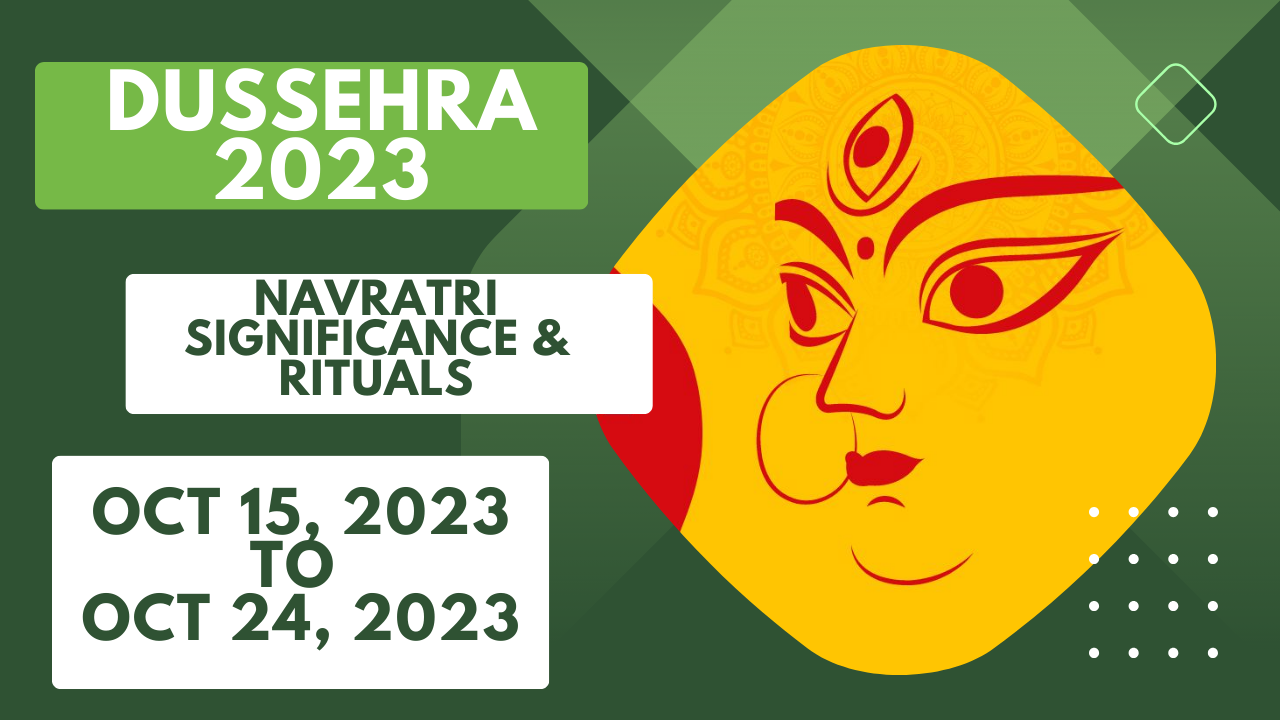Dussehra 2023 Start Date And End Date: History & Significance
Dussehra 2023: Celebrating Victory of Good Over Evil As the vibrant festival of Dussehra, also known as Vijayadashami, approaches, it’s time to delve into its significance, rituals, and the joyous celebrations that mark the victory of good over evil. Let’s explore the Dussehra 2023 Start Date And End Date, the legends that surround this auspicious occasion, and the customs that make it a cherished part of Indian culture.
Post Contents

Dussehra 2023 Start Date And End Date
Dussehra 2023, also referred to as Vijayadashami, is set to take place from October 15, 2023, to October 24, 2023. The Vijay Muhurat, a propitious time for celebrations, falls between 01:58 PM and 02:43 PM on the Hindu Panchang (Calendar).
| Festival | Dussehra |
| Also, Know that | Vijaydashami or Dasain |
| Start And End date | October 15, 2023, to October 24, 2023 |
| Time | Between 01:58 PM and 02:43 PM |
| Vijaydashami | October 24, 2023 |
Significance of Dussehra
Dussehra, the culmination of the nine-day Navratri festival, holds immense importance in Hindu culture. It commemorates the triumph of virtue over evil, symbolizing the victory of Lord Rama over the demon king Ravana and Goddess Durga over Mahishasura. The festival is marked by fireworks, the burning of Ravana effigies, and a spirit of joyous celebration.
Dussehra 2023 History & Significance
Dussehra, also known as Vijayadashami, signifies the conclusion of the nine-day Navratri festival, honoring all incarnations of Goddess Durga. Falling on October 24, 2023, it is a day of victory, or Vijayadashami. Diwali festivities commence after Dussehra, emphasizing the triumph of good over evil.
Legends of Dussehra
Two prominent legends associated with Dussehra involve the victories of Goddess Durga over Mahishasura and Lord Rama over Ravana. Lord Rama’s vanquishing of Ravana is particularly celebrated during Dussehra, symbolizing the triumph of righteousness.
Dussehra Celebrations
Dussehra celebrations vary across India, with each region embracing unique traditions. Common customs include large-scale processions, Ravana Dahan (burning of Ravana effigies), Ramleela performances, and Kanya Pujan. The festival is also marked by charitable giving and the worship of weapons (shastra puja).
Frequently Asked Questions (FAQs) about Dussehra:
1. What is the significance of the Vijay Muhurat during Dussehra?
- The Vijay Muhurat is considered an auspicious time during Dussehra for engaging in celebratory activities. It is believed to enhance the positive energy and success associated with the festival.
2. How is Dussehra celebrated in different regions of India?
- Dussehra is celebrated with diverse traditions, such as Ravana Dahan in the north, Kullu Dussehra in Himachal Pradesh, and Saraswati Puja in West Bengal. Each region brings its cultural richness to the festivities.
3. What is the connection between Dussehra and Diwali?
- Diwali, celebrated twenty days after Dussehra, marks the return of Lord Rama after his victory over Ravana. Both festivals share the theme of the triumph of good over evil.
4. Can non-Hindus participate in Dussehra celebrations?
- Dussehra is a festival that transcends religious boundaries, and people from all backgrounds are often welcome to join in the festivities, witness cultural events, and partake in the joyous spirit of the occasion.
5. What is the significance of the burning of Ravana effigies during Dussehra?
- The burning of Ravana effigies symbolizes the victory of righteousness over evil forces. It is a theatrical representation of Lord Rama’s triumph over the demon king Ravana, reinforcing the festival’s central theme.
Ganesh Chaturthi 2023: Date & Time, Shubh Muhurat, Rituals, and Significance
As Dussehra 2023 approaches, let’s embrace the cultural richness and spiritual significance of this festival, fostering unity and celebrating the eternal victory of good over evil.
Visit Way2offers to Our Homepage for Related Topics

